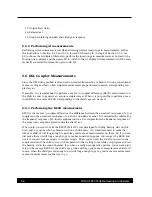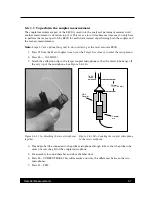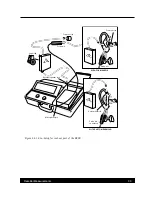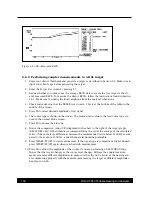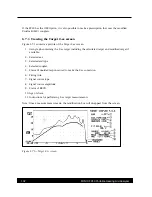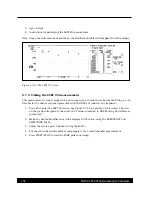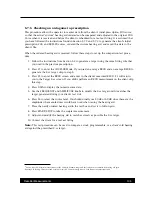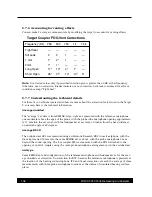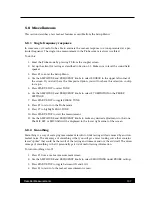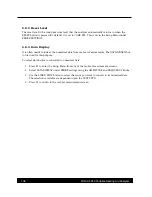
110
FONIX FP40 Portable Hearing Aid Analyzer
5.9.2 Testing CROS and BICROS aids
Four Goals:
5.9.2.1 Measure the head baffle effect
5.9.2.2 Measure how well the aid overcomes the head baffle effect
5.9.2.3 Measure the overall insertion gain
5.9.2.4 Measure the insertion loss to the “good” ear
Each of these measurements uses the insertion gain measurement technique, taking advantage of
the fact that insertion gain is a difference curve between two measured curves (usually the unaided
and aided response). The CROS and BICROS measurement techniques assign the label of “unaided”
to one measurement and “aided” to another measurement.
Take all measurements in the Insertion Gain screen. For measurements labeled “unaided” (even
if they aren’t unaided), follow the instructions in Section 5.3.2 or measurements labeled “aided”
(even if they aren’t aided), follow the instructions in Section 5.3.3.
5.9.2.1 Head-Baffle Effect
CROS or BI-CROS
A.
Unaided
—Real Ear response on “bad ear” side
Set up the FP40 analyzer as follows.
• System UNLEVELED
• Reference microphone OFF
• Unaided CUSTOM
• Probe microphone over the bad ear, tube jutting just
slightly forward of pinna
• Loudspeaker at 90º, 12 inches from bad ear
B.
Aided
—Real Ear response on “good” ear side
Same setup as A except:
• Probe microphone over the good ear
The difference curve, labeled “Insertion Gain” on the
screen, shows the attenuation of sound arriving at the
good ear from the bad ear side. Since this measurement
excludes the external ear, differences across individuals
should be minimal.
Note:
Although the above two measurements calls for
the FP40 to be UNLEVELED with the reference micro-
phone OFF, the rest of the measurements in this section call for the FP40 to be LEVELED with the
reference microphone ON.
12"
PROBE MIC
SPEAKER
GOOD
EAR
BAD
EAR
12"
PROBE MIC
SPEAKER
GOOD
EAR
BAD
EAR

